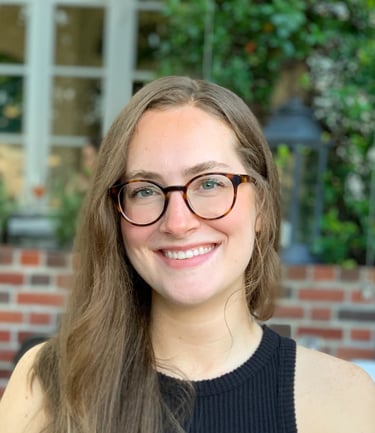How to Build The Best One-Page Website
WEB DESIGN
In a world where attention spans are shrinking and people expect answers fast, one-page websites have become a powerful tool—especially for small businesses, personal brands, or service providers with a focused offering.
But here’s the catch: a one-page website isn’t just about cramming everything into a single scroll. Done right, it can guide visitors smoothly toward action. Done wrong, it can confuse, overwhelm, or underperform.
At BragencyX, we’ve helped dozens of businesses in Hampton Roads and beyond build high-performing one-page websites that look great and actually get results. Here's how to build the best one-page website—one that works as hard as you do.
Why Choose a One-Page Website?
Not every business needs a massive, multi-page website. If you’re a new business, a solopreneur, or launching a specific offer, a one-page site can be a smart choice. It’s easy to navigate, quick to load, and ideal for keeping things focused.
One-page sites are especially effective when you want your visitor to do one thing: book a call, fill out a form, download something, or buy a product. Less distraction = more conversion.
But it only works if the page is designed with strategy in mind.
Start With Clear, Compelling Messaging
The top of your site—what’s visible before someone scrolls—should clearly explain who you are, what you do, and how you help. This is your hero section, and it’s where you either grab attention or lose it.
Avoid generic headlines like “Welcome to Our Website.” Instead, focus on the value you provide.
For example: “Custom Landscaping Solutions for Virginia Beach Homes” or “Helping Small Business Owners Build Brands That Convert”
Pair this with a strong subheadline and one clear call-to-action, like “Get a Free Quote” or “Book Your Free Call.”
Break It Into Strategic Sections
Even though it’s one page, your site should still feel like a journey—guiding visitors from interest to trust to action. At BragencyX, we typically recommend this structure:
Hero Section – Clear statement of value + CTA
About Section – A short intro to your business or story
Services or Offerings – What you provide, who it's for
Social Proof – Testimonials, reviews, or trust badges
Portfolio or Examples (Optional) – Great for creative or service work
FAQ Section – Address common objections or concerns
Final Call-to-Action – A clear next step + contact info
Each section should be short, scannable, and visually engaging. Use white space to avoid overwhelming the user and make it easy for them to find what they need.
Design for Flow and Focus
The most successful one-page websites are designed with intentional flow. That means using visual hierarchy (font sizes, spacing, and color) to guide the eye, and not distracting the user with too many options.
Stick to one or two fonts, a consistent color palette, and high-quality visuals. Use icons, dividers, and subtle animation to break up content and keep it engaging.
And always remember: mobile first. Over half of your traffic will likely come from smartphones. Your site should look just as clean and functional on a phone as it does on a desktop.
Add Trust Elements That Do the Selling For You
Since you don’t have multiple pages to convince someone to trust you, you’ll need to build that confidence within the flow of the page.
This is where things like testimonials, case studies, years in business, or even a short video introduction can make a big impact. People don’t just want to know what you do—they want to know why they should trust you to do it well.
Bonus tip: Include a real photo of you or your team if possible. Human connection goes a long way, especially for service-based businesses.
End With One Clear Call-to-Action
Don’t assume your visitor will scroll back to the top. Close your page with a strong call-to-action that matches the goal of your site: book a call, submit a form, download something, etc.
Keep the form simple—name, email, maybe a short message field. The easier it is to act, the more likely someone will do it.
And don’t forget to include your contact info—ideally at the top and bottom of the page—so it’s always accessible.
Common Mistakes to Avoid
Even great businesses can fall into traps that hurt their one-page performance. Here are a few to watch for:
Too much text. Keep it punchy and focused. You’re not writing a novel.
Too many CTAs. Stick to one main goal and drive everything toward that.
Poor mobile design. Always test on your phone before going live.
No SEO structure. Even one-pagers need headings, image alt tags, and a focus keyword to rank.
Final Thoughts
A well-designed one-page website can be your secret weapon—especially if you’re just starting out or promoting a specific offer. But like any tool, it only works if it’s built strategically.
At BragencyX, we specialize in crafting one-page websites that not only look incredible but are optimized to convert, rank, and build trust. Whether you're launching a business, rebranding, or simplifying your digital presence, we can help you do it with purpose.
Want a High-Converting One-Page Site? We’ll help you plan, design, and launch a one-page website that makes the right impression and drives real results.
Get a Free One-Page Website Audit or Consultation today.




Need a Quick Web Design Checkup?
We offer FREE Website & SEO Audits for local businesses in Virginia Beach, Chesapeake, Hampton Roads, and beyond.
Danielle Leland


Author, Owner
Danielle is a Chesapeake-based web design, SEO, & brand designer helping entrepreneurs grow their businesses.







